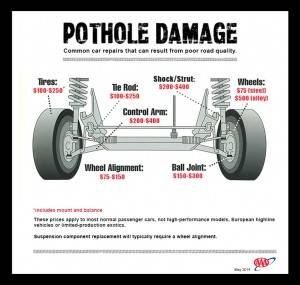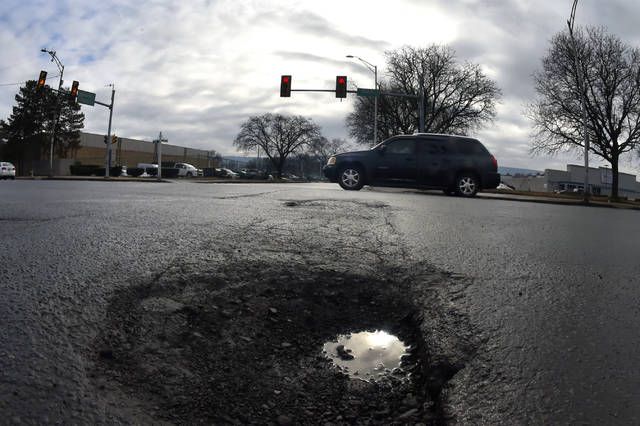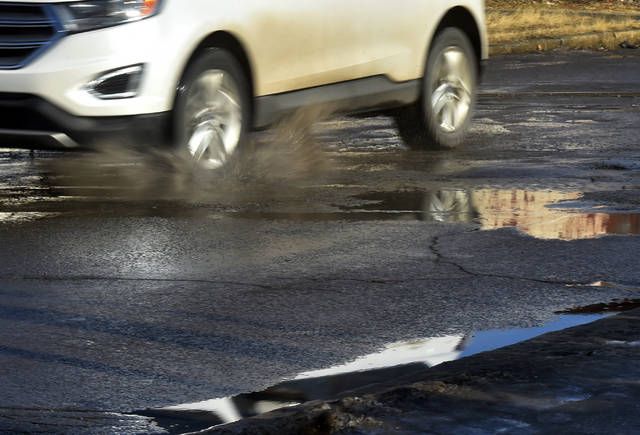Click here to subscribe today or Login.
WILKES-BARRE — Long before the first robin appears, motorists will surely see many other harbingers of spring — those nasty, car-damaging potholes.
According to Jana Tidwell, manager of Public and Government Affairs for AAA Mid-Atlantic, last week’s extreme cold followed by a significant warming trend has opened up some serious holes in the pavement.
Previous research from AAA indicates that American drivers spend $3 billion annually — an average of $300 per motorist — repairing pothole-related damage.
Typically, potholes form when moisture collects in small holes and cracks in the road surface. As temperatures rise and fall, the moisture expands and contracts due to freezing and thawing. This breaks up the pavement and, combined with the weight of passing cars, eventually results in the formation of potholes.
Blown tires, dented rims, damaged wheels, dislodged wheel weights, displaced struts, dislocated shock absorbers, and damaged exhaust systems are all common automotive issues caused by pothole run‐ins. Other telltale signs include misaligned steering systems and ruptured ball joints.
To aid motorists in protecting their vehicles, AAA recommends:
Inspect tires — The tire is the most important cushion between a car and a pothole. Make sure tires have enough tread and are properly inflated. When checking tire pressure, ensure it is inflated to the manufacturer’s recommended levels, which can be found in the owner’s manual or on a sticker on the driver’s door jamb. Do not use the pressure levels stamped on the sidewall of the tire.
Look ahead — Make a point of checking the road ahead for potholes. An alert driver may have time to avoid potholes, so it’s important to stay focused on the road.
Slow down — If a pothole cannot be avoided, reduce speed safely and be sure to check the rear-view mirror before any abrupt braking.
Beware of puddles — A puddle of water can disguise a deep pothole. Use care when driving through puddles.
Check alignment — Hitting a pothole can knock a car’s wheels out of alignment and affect the steering. If a vehicle pulls to the left or right, have the wheel alignment checked.
Recognize noises/vibrations — A hard pothole impact can dislodge wheel weights, damage a tire or wheel, and bend or even break suspension components. Any new or unusual noises or vibrations that appear after hitting a pothole should be inspected immediately by a professional.
Report a pothole — Motorists are encouraged to report potholes by visiting the AAA website. For more: AAA.com.







